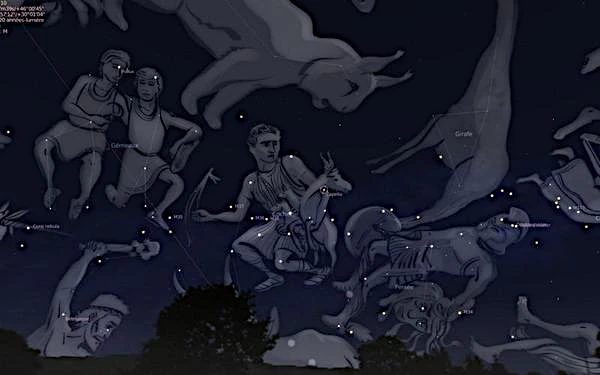
Image: Auriga constellation. Image enhanced using the Open Source Stellarium software.
Have you ever looked at the starry night sky and admired the constellations? Do you know the Auriga constellation? In this scientific article, we will explore this fascinating constellation together.
The Auriga constellation is visible in the northern hemisphere during the winter. It is easily identifiable by its characteristic "W" shape. Auriga is depicted as a charioteer holding the reins of two horses.
Auriga is an ancient constellation that has been observed for thousands of years. It is associated with several legends in different cultures. In Greek mythology, the constellation is linked to Myrtilus, the charioteer of Queen Hippodamia. He betrayed his master and helped Pelops win the chariot race in exchange for a promise from Pelops to share the victory with him. However, Pelops broke his promise and killed Myrtilus.
The brightest stars in the Auriga constellation are Capella and Menkalinan. Capella is a bright yellow star, while Menkalinan is a white star. Capella is a binary star, which means it is actually made up of two stars orbiting each other. The other stars in the Auriga constellation are dimmer, but they all contribute to its characteristic shape.
The Auriga constellation is located in the Milky Way, the white band of stars that can be seen in the night sky. It is part of a group of constellations called the winter constellations, which also include Orion, Taurus, and Gemini.
Now that you know a little more about the Auriga constellation, try to spot it the next time you look at the night sky. Maybe you can identify the bright stars Capella and Menkalinan, along with the other stars that make up this fascinating constellation.